Crested geckos have become increasingly popular as reptilian pets due to their unique appearance and relatively low maintenance requirements.
While they are known for their hardy nature, there are several crucial guidelines that every crested gecko owner should be aware of to ensure their pets thrive in captivity.
In this article, I’ll discuss seven things you should never do to your crested gecko, highlighting key aspects of responsible and informed care.
Let’s dive in…
1) Never handle him roughly
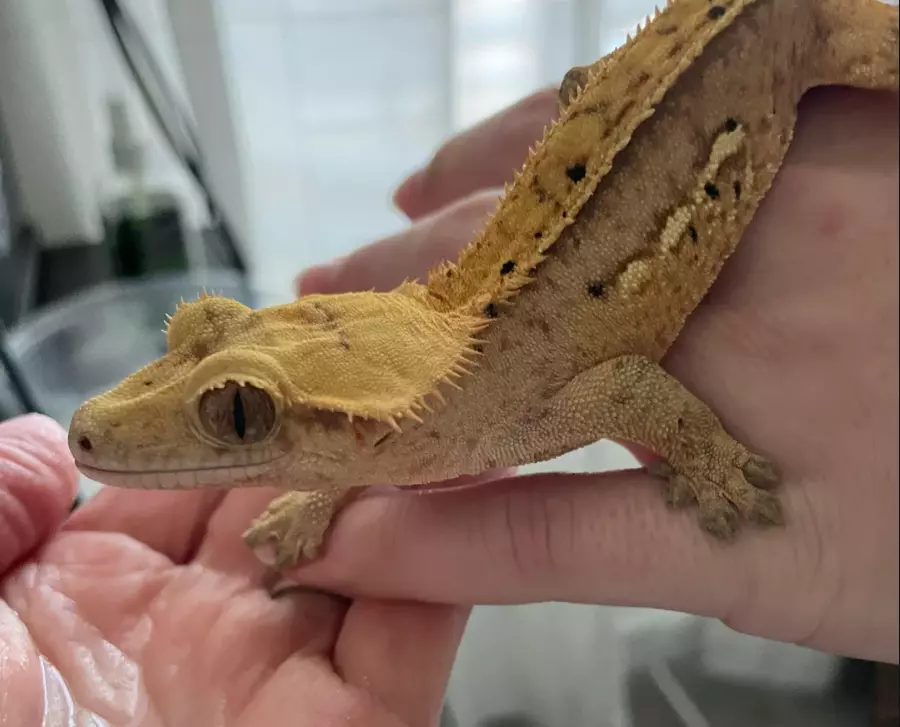
Crested geckos are usually calm and can tolerate being held, but they can also get easily scared.
When you hold your gecko, remember a few important things, with the most crucial being: “Don’t hold them for more than 20 minutes a day.“
Yes, —Don’t hold them for more than 20 minutes a day!
Here are some simple caring rules I personally follow when handling my gecko:
- Avoid Tail Grabs: Never grab your crested gecko by the tail. If the tail detaches, it can cause stress and potential health issues for your pet. Instead, gently scoop them up from below and support their body to minimize stress.
- Minimize Pressure: When holding your gecko, use minimal pressure. Their bones are delicate, and too much force can result in fractures. Hold them securely but without squeezing.
- Limit Handling: While it’s okay to handle them occasionally for tasks like cleaning or health checks, it’s best to avoid unnecessary handling.
Remember, crested geckos aren’t typically “hands-on” pets, and handling them too much can make them very stressed. So, be careful.
2) Never expose to extreme temperatures
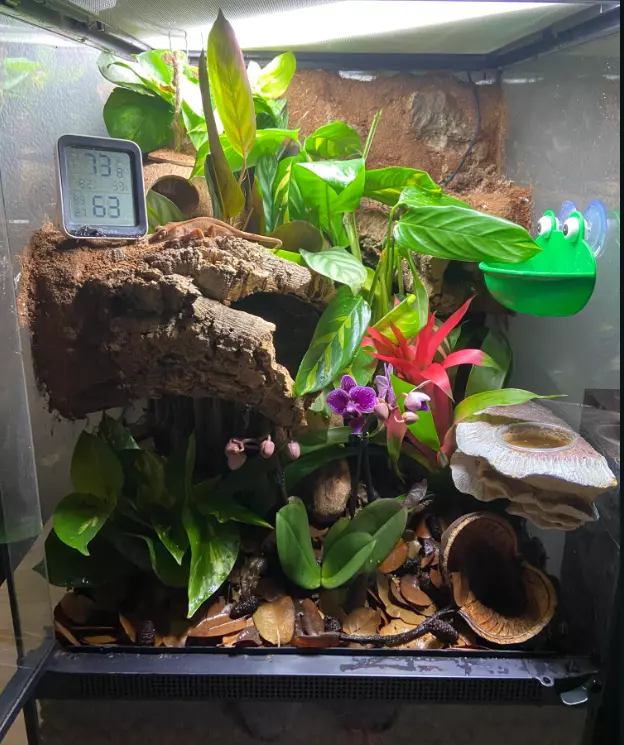
Crested geckos are really sensitive to temperature changes, and it’s super important to make sure they’re in the right temperature range to stay healthy.
They should never get too hot or too cold because that can be really bad for them.
They are especially sensitive to heat.
If it goes above 87 degrees Fahrenheit (30.5 degrees Celsius), they can get stressed, dehydrated, or even die. So, it’s vital to maintain their enclosure at a safe temperature.
On the flip side, they are also sensitive to cold temperatures.
If the temperature drops below 60 degrees Fahrenheit (15.5 degrees Celsius), they can become stressed and their metabolic functions may slow down.
3) Never overfeed or underfeed

Make sure you feed them just right.
Crested geckos have a moderate appetite, and they can get overweight or malnourished if you feed them too much or too little.
For a balanced diet, consider giving them a mix of two main things:
- Commercial crested gecko diet (CGD)
- And live insects.
Sprinkle some calcium powder on the live insects to make them even more nutritious.
This combo provides all the important nutrients and variety, similar to what they’d eat in the wild.
Here’s a general feeding schedule:
| Age | Feeding Schedule |
|---|---|
| Hatchlings (0-4 months) | Feed daily with a mix of crested gecko diet and insects such as crickets and waxworms. |
| Juveniles (4-12 months) | Feed every other day with a mix of crested gecko diet and insects such as crickets and waxworms. |
| Adults (12+ months) | Feed 2-3 times a week with crested gecko diet. Insects such as crickets and waxworms can be given once or twice a week as a treat. |
Don’t forget to remove any uneaten food after 24 hours to prevent it from going bad and developing mold.
4) Choose Safe Stuff For His Home
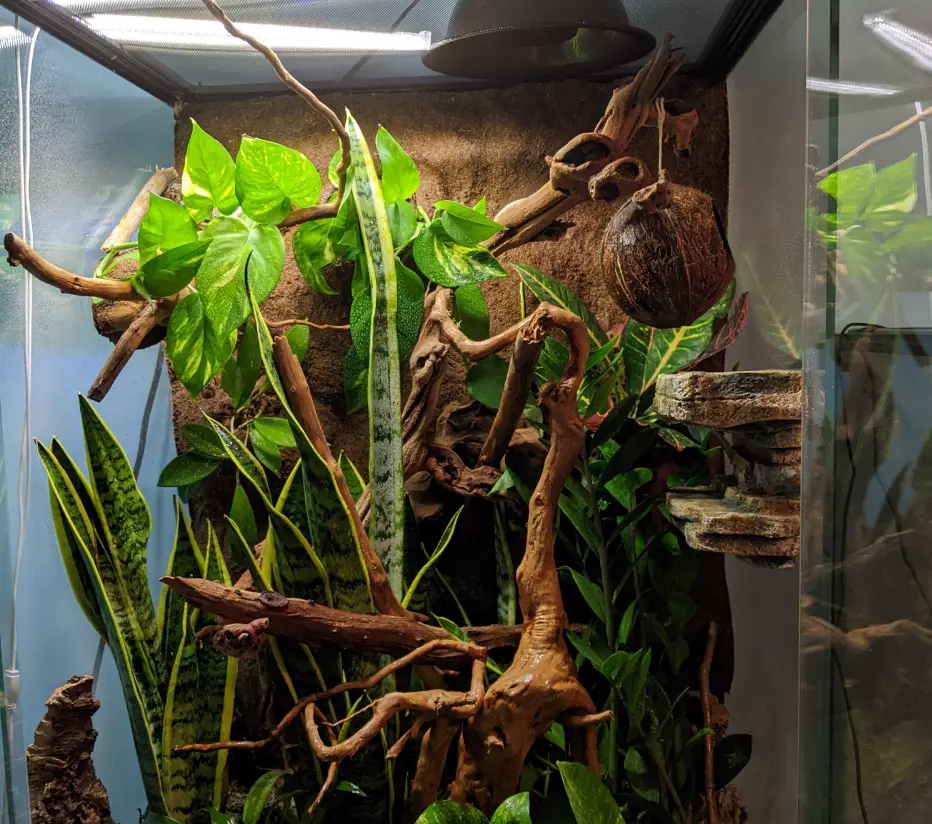
Crested geckos are curious and active pets that enjoy exploring their space.
But they can accidentally eat or hurt themselves with certain items that aren’t right for them.
So, don’t use things like sharp, dusty, or edible stuff like gravel, sand, or wood shavings as bedding. Also, avoid using plants that can be harmful, like cactus, ivy, or bamboo.
The main point is, don’t use any decorations that could hurt them or have small pieces they might swallow!
5) Don’t Cram Too Many Geckos Together
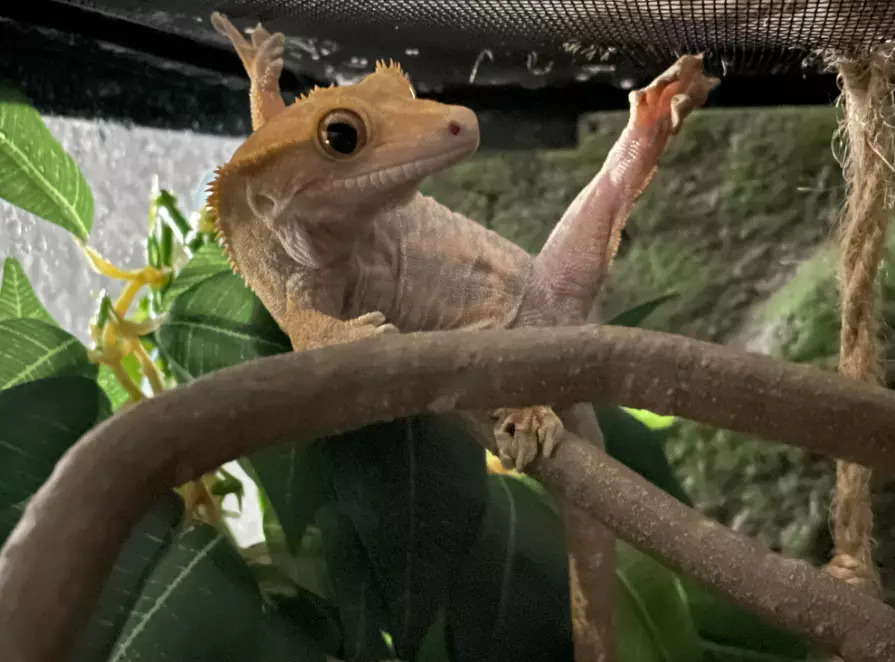
Crested geckos need enough space to live comfortably and peacefully.
If you put too many geckos in one place, they might feel stressed, argue over space, or even become mean to each other.
It’s better to keep them on their own or in pairs, like one male and one female, in a roomy enclosure.
So, when you decide on a home for your geckos, make sure it’s big enough for the number of geckos you have.
For a pair of crested geckos (one male and one female), I recommend using a 20-gallon tall terrarium as the smallest option.
F.A.Q.s
Q: Can I feed my crested gecko only insects, or do they need commercial crested gecko diet (CGD)?
While crested geckos can eat insects, they should not rely solely on them for their diet.
A balanced diet for crested geckos includes both CGD and live insects as occasional treats.
CGD provides essential nutrients, while insects offer variety and stimulate natural behaviors.
Q: What fruits are safe for crested geckos to eat?
Crested geckos can safely consume a variety of fruits, including bananas, figs, papayas, and apricots.
Ensure that the fruits are ripe and offered in small, appropriately sized pieces.
Q: My crested gecko’s tail looks different after handling. Is this normal?
Crested geckos can drop their tails as a defense mechanism (autotomy).
If their tail looks different after handling, it might be a sign that they have shed it.
This is common, but the tail will not grow back.
Q: Can I house multiple crested geckos together?
You can house them together, but it’s essential to follow some rules.
Avoid housing multiple males together, as they can become aggressive. Keeping them singly or in pairs (one male and one female) is generally recommended.
Provide an appropriately sized enclosure to prevent territorial disputes.

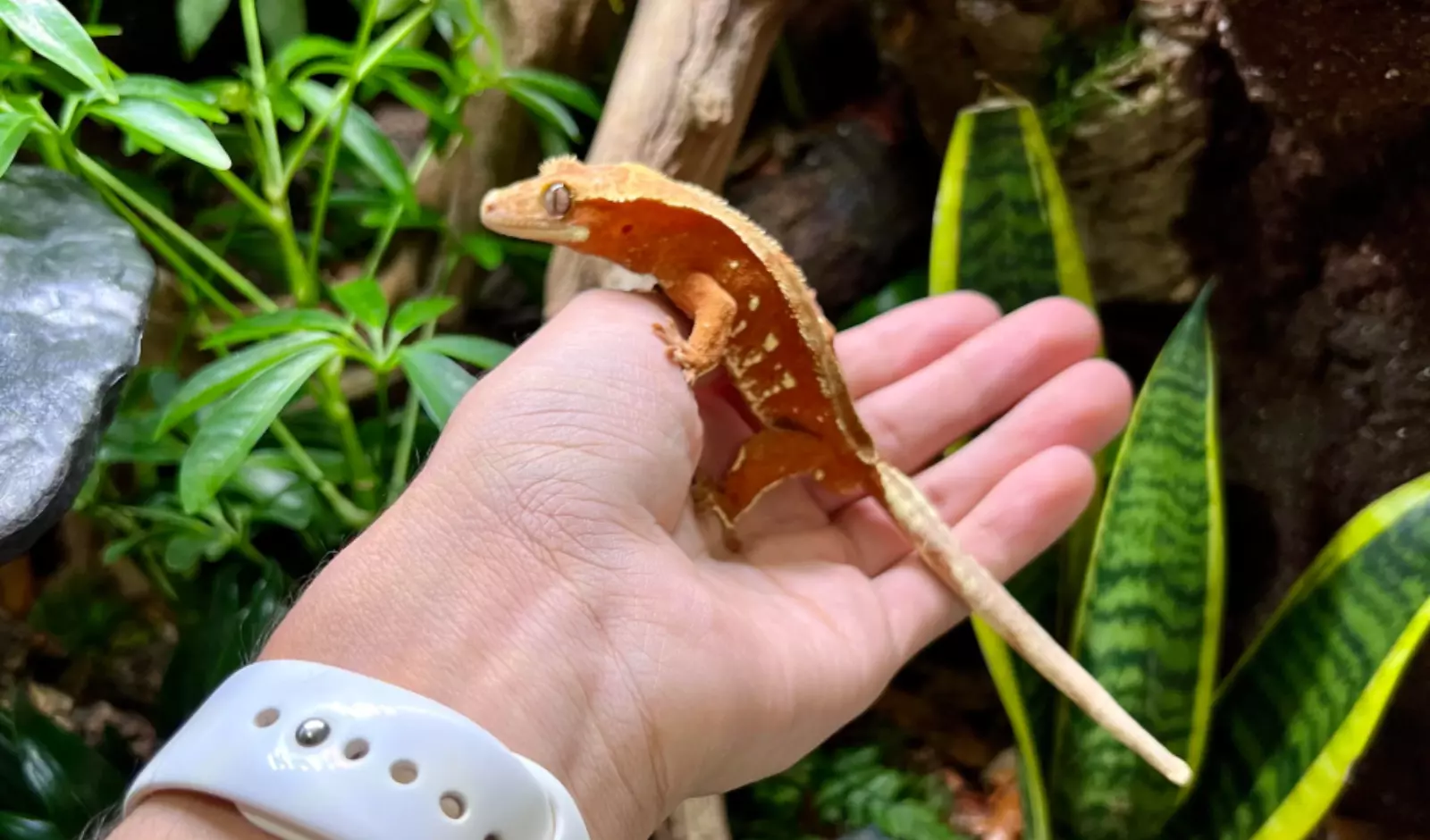
[…] Don’t intentionally stress your gecko to fire it up. Instead, observe its behavior during dusk and nighttime when it’s most likely to fire up. […]